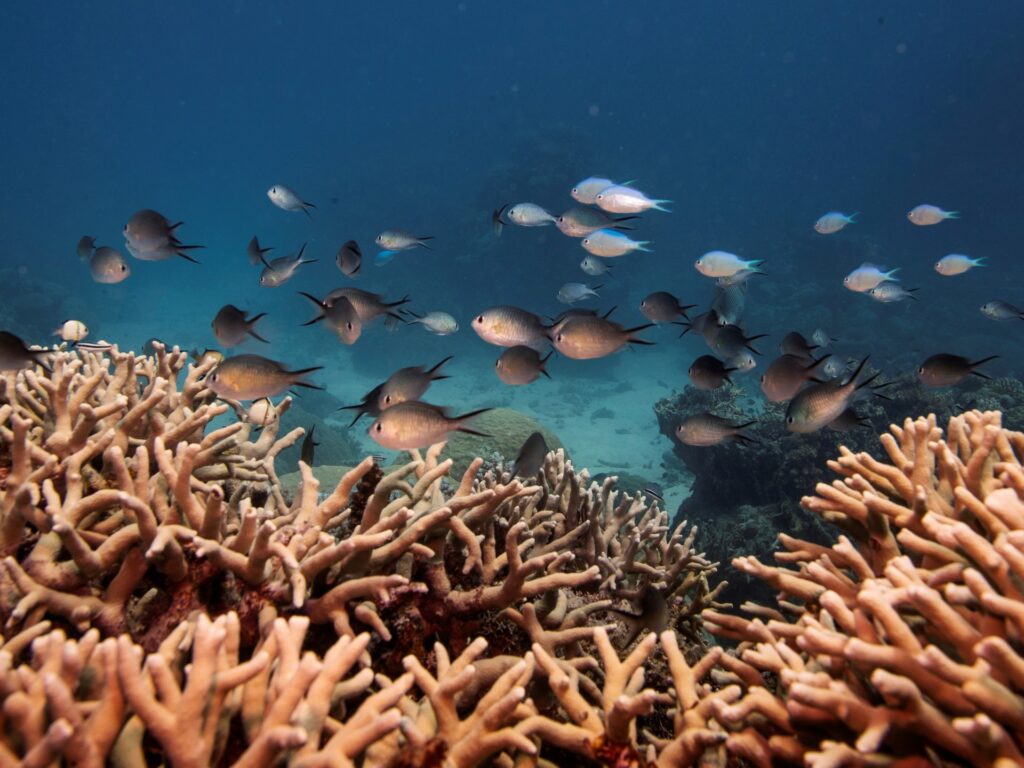Warming oceans threaten the habitat of thousands of marine species, but some corals can recover as temperatures cool.
Australia's Great Barrier Reef is experiencing a massive coral bleaching event likely caused by heat stress built up over the summer in the biologically diverse site, a government agency has announced. .
The Great Barrier Reef Marine Park Authority (GBRMPA), which monitors the health of coral reefs, said on Friday that damage was “widespread” across at least two-thirds of the UNESCO World Heritage Site's surveyed area.
This living coral reef stretches approximately 2,300 km (1,429 miles) off Australia's northeast coast and is considered one of the most species-rich habitats on Earth. It is home to hundreds of corals, 1,500 species of fish, and 4,000 species of molluscs.
Coral reefs are an important part of marine life, as they are home to more than a quarter of all marine life on Earth, protect coastal communities, and are natural carbon sinks. As they are sensitive to heat, climate change is the biggest threat to their survival.
Bleaching causes corals to lose the colorful algae that live in their tissues, turning them white. Corals can survive bleaching events, but bleaching can stunt growth and affect reproduction.
Prolonged or intense heat can cause coral death.
“These results are consistent with what has been observed across marine parks over long periods of above-average sea surface temperatures,” GBRMPA principal scientist Roger Beeden said in a statement.
“Aerial surveys of the region show that coral bleaching is widespread in shallow waters, but underwater surveys are needed to confirm the extent and depth range of coral bleaching.”
“We know that the biggest threat to coral reefs around the world is climate change, and the Great Barrier Reef is no exception,” Environment Minister Tanya Plibersek said in a statement. “We need to act on climate change. We need to protect our special places and the plants and animals that call them home.”
The bleaching event is similar to reports on coral reefs around the world due to rising sea surface temperatures, primarily caused by climate change, but is amplified by the effects of the El Niño phenomenon, which typically causes ocean temperatures to rise, the agency added.
Earlier this week, the National Oceanic and Atmospheric Administration announced that the world is on the brink of the fourth major coral bleaching event, which could wipe out large areas of tropical coral reefs, including parts of the Great Barrier Reef.
The World Wide Fund for Nature (WWF) said in a statement that several bleaching events in recent years demonstrated that climate change was putting “tremendous pressure” on coral reefs.
“WWF is extremely concerned that this bleaching event is occurring in areas where corals have not previously been exposed to extreme temperatures. Unless we see a significant drop in temperatures in the coming weeks, “There is a high risk of significant coral mortality,” said Richard Reck, WWF's head of oceans for Australia.
According to the Australian Institute of Marine Science, large-scale bleaching events have occurred on the Great Barrier Reef in 1998, 2002, 2016, 2017, 2020 and 2022.
The United Nations cultural and scientific organization (UNESCO) has proposed putting the Great Barrier Reef on its endangered list, but Australia has been lobbying intensively for years to stop that move.
The reef is a major tourist attraction in the country, contributing around A$6 billion (US$4 billion) to the economy and employing 64,000 people. Inclusion on UNESCO's list of endangered species could erode this heritage status and make it less attractive to tourists.

